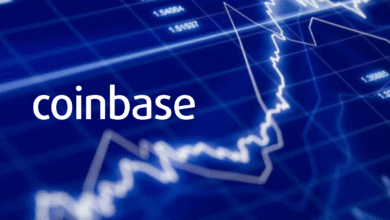Stablecoin Success: Trust, Not Size, is Essential

The stablecoin success story is rapidly unfolding in the financial landscape, driven by the need for trust and reliability in digital assets. As Concordium CEO Boris Bohrer-Bilowitzki highlights, the future of stablecoins relies on a diversified approach, moving away from an overreliance on the U.S. dollar. By adopting multi-currency stablecoins, the industry not only mitigates systemic risks but also enhances the credibility of cryptocurrencies in payment finance (PayFi) systems. Balancing market stability while minimizing risks linked to single fiat currencies is vital as analysts pour over the evolving relationship between stablecoins and trust. With innovative solutions emerging, the stablecoin market offers promising potential for transforming traditional finance into a more dynamic ecosystem filled with opportunities.
In recent years, the digital currency landscape has witnessed a noteworthy trend towards the increasing stability and utility of digital assets, especially in the form of stablecoins. These cryptocurrency derivatives have gained traction due to their ability to maintain a stable value, often pegged to established fiat currencies. Multi-currency digital tokens emerge as a viable alternative, allowing users to navigate the volatile crypto market more confidently by embracing diversity in their asset backs. Additionally, as the conversation surrounding regulatory compliance and market trust deepens, stakeholders are becoming acutely aware of the risks involved in concentrating on a single reserve currency. The evolution of stablecoin strategies will ultimately dictate their role in payment finance and the greater blockchain ecosystem.
The Importance of Trust in Stablecoin Ecosystems
Trust is a critical component in the burgeoning world of stablecoins. As highlighted by Concordium CEO Boris Bohrer-Bilowitzki, the perception of stability and reliability in these digital assets directly influences user confidence. If stablecoins are to achieve mainstream acceptance and success, they must ensure stringent measures around transparency, accountability, and regulatory compliance. The fallout from past events, such as the UST collapse, serves as a grim reminder that even significant market share does not equate to credibility in the eyes of investors. For stablecoins to prosper, they need to foster a reputation built on trust and carry out due diligence for compliance without compromising user privacy or operational efficiency.
Moreover, perceived risks surrounding stablecoin concentration can erode trust at a fundamental level. As the industry stands at a crossroads, recognizing the necessity of a diversified approach to stablecoin offerings is essential. With the dominance of USD-backed models, there is a growing need for alternatives that can bolster user confidence through a more stable and diversified currency approach. Embracing multi-currency stablecoins can help distribute the risk and attract a broader user base which inherently strengthens trust.
Navigating Stablecoin Market Risks
The current stablecoin landscape is fraught with challenges, particularly due to the overwhelming reliance on the U.S. dollar. As Bohrer-Bilowitzki pointed out, this heavy reliance poses systemic risks, especially in light of potential regulatory changes or macroeconomic shifts that could destabilize the dollar. Moreover, concentrated reliance on a singular currency increases volatility, making the entire ecosystem vulnerable to sudden changes. Analysts suggest that the evolution of stablecoins necessitates robust risk management frameworks, allowing for adaptive strategies that mitigate potential impacts from market turbulence.
In addition to currency concentration, other industry-specific risks persist, such as the specter of stablecoin depegging. Events like the alarming depegging of FUSD highlight the necessity for stronger safeguards within the stablecoin sphere. This episode serves as a cautionary tale, demonstrating how quickly user trust can be compromised. Therefore, addressing these risks through technological innovation and regulatory frameworks is crucial for maintaining stability within the stablecoin market. Future initiatives may include enhanced regulatory scrutiny, improved market monitoring, and transparent operational methodologies that protect against volatility.
Diversification: The Future of Stablecoins
In light of the risks tied to concentrated stablecoin models, diversification emerges as a key theme for the future viability of these digital assets. Bohrer-Bilowitzki emphasizes that multi-currency stablecoins could hold the key to a more resilient ecosystem. With projects underway to develop stablecoins backed by a variety of fiat currencies, including the euro and Swiss franc, the stablecoin market is on the brink of a transformation that may lower dependency on the dollar and spread the risk more equitably. This diversification could facilitate healthier competition within the sector and present unique opportunities for innovation in financial transactions.
The development of multi-currency stablecoins not only hedges against the risk of fiat instability but also enables users to transact with currencies they are more familiar with. This strategy aligns with the broader trends in decentralized finance (DeFi), where users seek options that cater to a globalized economy. By expanding the ecosystem of stablecoins, industries like payment finance (PayFi) gain a diversified toolset that can meet varied user needs, ultimately resulting in enhanced trust in these digital assets.
Reimagining Payment Finance with Stablecoins
As we enter a new era of financial connectivity, stablecoins are poised to play a fundamental role in the evolution of payment finance (PayFi). Bohrer-Bilowitzki elucidates the advantages of stablecoins, including low fees, instant settlements, and programmability in financial transactions. These features position stablecoins as a significant alternative to traditional payment systems, which often struggle with inefficiency, high costs, and slow transaction times. By integrating stablecoins into payment systems, businesses can enhance their transactional capabilities while meeting the demand for greater efficiency in a digital-first economy.
Moreover, the programmability of stablecoins opens avenues for innovative financial solutions that traditional assets simply cannot offer. With the ability to create smart contracts and automate processes, stablecoins could revolutionize how payments are structured and executed. This adaptability is critical for businesses aiming to cater to an increasingly tech-savvy consumer base, ultimately allowing them to remain competitive in a rapidly changing market context.
Compliance Challenges in Blockchain and Stablecoins
Compliance within the blockchain sector, particularly concerning stablecoins, is a multifaceted challenge that requires thoughtful consideration. As noted by Bohrer-Bilowitzki, many blockchain projects treat compliance as an afterthought, which jeopardizes their long-term viability and user trust. To ensure sustained success, projects must embrace proactive compliance strategies that align with regulatory expectations while retaining the core principles of decentralization and user privacy. Institutions that develop robust compliance mechanisms will likely emerge as leaders in the stablecoin and broader blockchain markets.
Furthermore, as regulations become more stringent globally, stablecoin projects face critical challenges in navigating the complexities of varying national frameworks. This necessitates the implementation of adaptable compliance solutions that account for jurisdictional nuances. By leveraging advanced tools like identity layers integrated with zero-knowledge proofs, stablecoin projects can enhance their compliance without infringing on user data privacy—striking a necessary balance between accountability and user trust.
The Rise of Non-Dollar Stablecoins
The emergence of non-dollar stablecoins is transforming the landscape, offering viable alternatives to USD-pegged models. As the need for diversification grows, currencies like the euro and Swiss franc are gaining traction within the stablecoin space. Non-dollar stablecoins cater to users looking for stability within their local economies, aligning financial products with their unique monetary policies. The integration of these currencies into the broader stablecoin ecosystem can mitigate risks associated with fiat concentration and enable users to transact without direct exposure to the U.S. dollar’s fluctuations.
In addition to providing alternative backing, non-dollar stablecoins can empower international trade and facilitate cross-border transactions in diverse markets. This diversification can enhance global financial systems by reducing reliance on a single currency and promoting greater economic stability. As these alternative stablecoins gain acceptance, their integration into payment systems could transform how individuals and businesses interact with currency, ultimately promoting a more inclusive financial landscape.
Trust-Driven Innovations in Stablecoin Technology
Stablecoin technology is at a critical juncture where trust-driven innovations are essential for long-term success. Bohrer-Bilowitzki emphasizes that advancements should not only focus on technical prowess but also prioritize user trust through features such as transparency and reliability. As market participants increasingly scrutinize the mechanisms behind stablecoins, projects that prioritize innovation based on trust will likely stand out in a fragmented market. Technologies that enhance transparency in transactions and provide robust auditing capabilities can significantly improve user confidence in stablecoins, evolving them beyond mere digital assets to trusted financial tools.
Moreover, the integration of user-friendly interfaces and seamless interactions will be crucial in fostering broader acceptance of stablecoins. The ability to engage easily with stablecoins through intuitive applications can catalyze user adoption, enhancing their role in payment finance. As the industry matures, the focus on crafting technology that embodies trust will determine which stablecoins carve out significant market share and reliability, firmly embedding them in the future of finance.
Future Prospects for Stablecoin Regulation
The regulatory landscape for stablecoins is dynamic and continues to evolve in response to the rapid development of blockchain technology and market demands. Industry leaders like Boris Bohrer-Bilowitzki suggest that the future of stablecoin regulation will likely entail more comprehensive frameworks that address user protection, systemic risk, and operational transparency. As regulators grapple with the challenges posed by these digital assets, stablecoin projects must remain agile, adapting to incoming regulations while ensuring that they maintain the operational integrity that users expect. Establishing clear guidelines will be crucial for bolstering user confidence and paving the way for sustainable growth within the stablecoin market.
As stablecoins become more intertwined with the global financial ecosystem, proactive engagement with regulators becomes increasingly necessary. Successful projects may foster partnerships with regulatory agencies to create a dialogue that not only informs policy development but also addresses sector-specific concerns. By spearheading compliance initiatives and actively participating in discussions around regulation, the stablecoin industry can position itself as a trusted partner in the financial narrative, ultimately enhancing its credibility and trustworthiness.
The Impact of Global Economics on Stablecoin Viability
Global economic trends have a profound influence on the viability and adoption of stablecoins. As indicated by the current geopolitical climate, fluctuations in economic stability can significantly impact trade dynamics and currency reliability. For example, during economic downturns, there may be a heightened demand for stable assets, escalating interest in stablecoins that provide a hedge against traditional market volatility. The volatility of currencies, influenced by policies and international relations, underscores the need to embrace a multilateral approach to stablecoin development that accommodates various economic conditions.
In this context, the evolution of stablecoins must account for how shifts in the global economy affect both user perception and behavioral patterns in financial transactions. By staying attuned to these external factors, stablecoin projects can implement adaptive strategies that resonate with users’ needs for security and stability during uncertain economic times. Ultimately, the success of stablecoins hinges on their ability to evolve alongside global economic trends, ensuring that they remain relevant and trustworthy financial instruments.
Frequently Asked Questions
What is the key factor for stablecoin success according to Concordium’s CEO?
According to Concordium CEO Boris Bohrer-Bilowitzki, trust—not size—is the essential factor for stablecoin success. He emphasizes the importance of transparency, consistency, credibility, and accountability as the foundation for long-term user confidence in stablecoins.
How can multi-currency stablecoins contribute to stablecoin success?
Multi-currency stablecoins play a crucial role in stablecoin success by providing diversification, which reduces the systemic risks associated with dependence on a single currency like the U.S. dollar. By embracing currencies such as the euro and Swiss franc, stablecoins can enhance resilience in the market.
What are the risks associated with the stability of USD-backed stablecoins?
The risks associated with USD-backed stablecoins include depegging and systemic instability caused by reliance on the U.S. dollar. As noted by Boris Bohrer-Bilowitzki, any regulatory disruptions affecting the dollar could impact the entire stablecoin market, making diversification vital for achieving stablecoin success.
What role do stablecoins play in the development of PayFi?
Stablecoins are poised to play a significant role in the development of Payment Finance (PayFi) by enabling instant settlements, lower transaction fees, and programmability. Their integration into traditional finance can modernize cross-border payments and enhance financial connectivity.
Why is user trust critical for stablecoin success?
User trust is critical for stablecoin success because stablecoins rely on confidence for their adoption and stability. As demonstrated in the aftermath of the UST collapse, any signals of systemic weaknesses can quickly erode trust, emphasizing the need for transparency and accountability in the stablecoin ecosystem.
How do regulatory compliance challenges impact stablecoin success?
Regulatory compliance challenges can significantly impact stablecoin success because they determine how well these cryptocurrencies can integrate into existing financial systems. Compliance must be addressed thoughtfully to avoid compromising user privacy while ensuring legal adherence, which is essential for gaining user trust and market acceptance.
What innovations are proposed by Concordium for enhancing stablecoin trust?
Concordium proposes using an identity layer equipped with zero-knowledge proofs to enhance stablecoin trust. This approach allows for user verification through trusted providers, maintaining privacy while ensuring compliance, thereby reinforcing the reliability and success of stablecoins in the market.
How does the current stablecoin market structure affect its future success?
The current stablecoin market is heavily dominated by USD-backed tokens, which poses risks due to over-reliance on one currency. For future success, it is vital for the market to embrace a structure that includes multi-currency stablecoins to mitigate these risks and foster a more resilient ecosystem.
| Key Point | Details |
|---|---|
| Trust and Diversification | CEO Boris Bohrer-Bilowitzki emphasizes the importance of trust in stablecoins and the need for diversification away from USD peg. |
| Risks of USD Concentration | Reliance on USD-pegged stablecoins makes the market vulnerable to regulatory and economic shifts, increasing risks for investors. |
| Regulatory Awareness | Post-LUNA/UST, investors are more vigilant about signs indicating instability, as dependence on a single currency can lead to market ripple effects. |
| Emerging Stablecoins | Bohrer-Bilowitzki encourages the development of non-USD stablecoins like EURC and DCHF to foster a more diverse stablecoin ecosystem. |
| Stablecoins in Payment Finance | Stablecoins are viewed as essential in providing immediate settlements and lower transaction costs in payment finance (PayFi). |
| Compliance Challenges | Many blockchain projects overlook compliance; Concordium’s unique identity verification system aims to balance privacy and regulatory needs. |
Summary
Stablecoin success hinges on instilling trust through diversification and compliance. As pointed out by Boris Bohrer-Bilowitzki, the CEO of Concordium, an over-reliance on the U.S. dollar can lead to systemic risks for the entire stablecoin market. Emphasizing the need for multiple currency representations, he highlights how stablecoins can revolutionize payment finance (PayFi) by ensuring lower fees and instant transactions. Overall, building a resilient and trustworthy stablecoin ecosystem requires addressing regulatory challenges and fostering user confidence through transparency.




